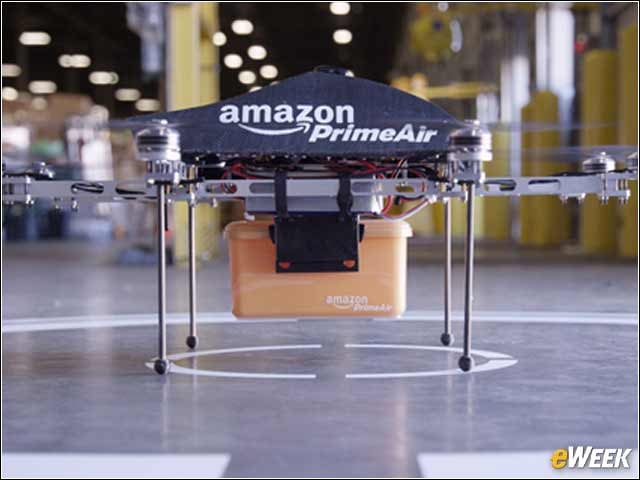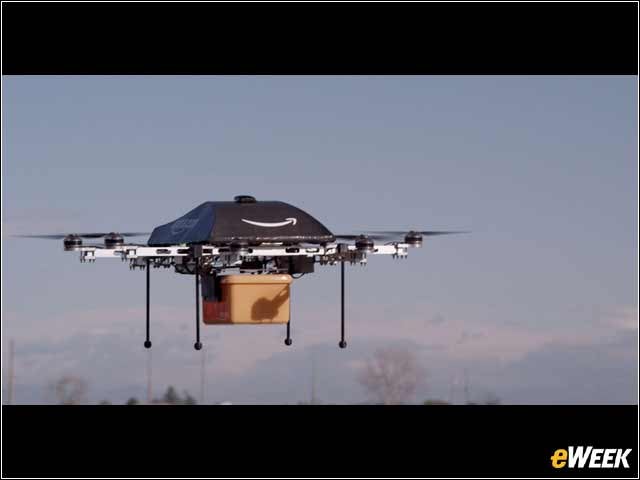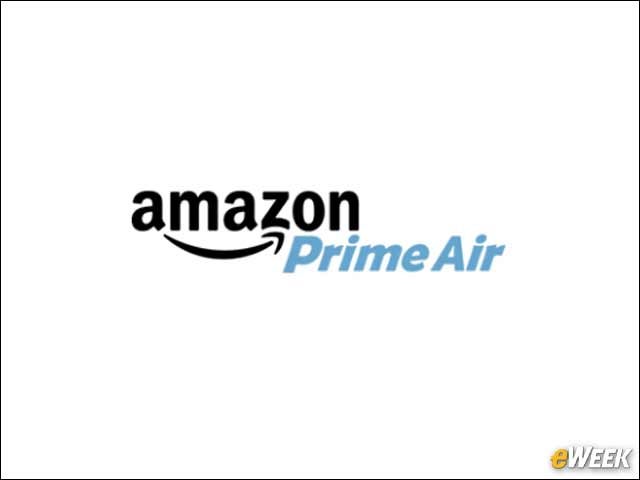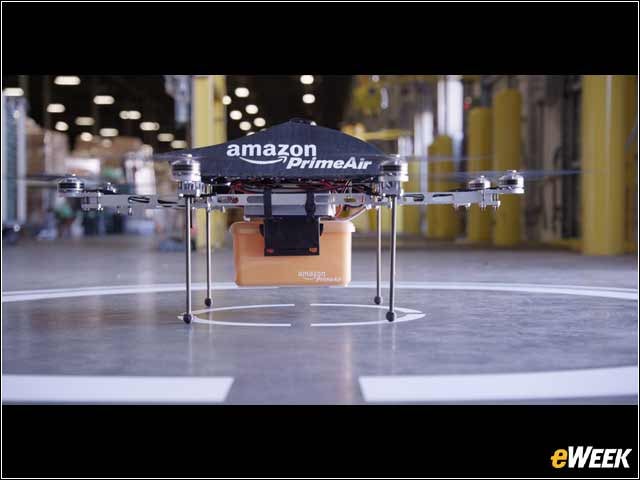eWEEK content and product recommendations are editorially independent. We may make money when you click on links to our partners. Learn More.
2Quick Delivery Is a Guarantee
The Prime Air’s main selling point is its ability to deliver packages extremely quickly. In fact, Amazon says that some packages could arrive as little as 30 minutes after a person clicks the “buy” button on its site. Other customers might have to wait a bit longer. Either way, it’s much better than waiting a day or two, right?
3Expect to Pay More for Amazon Prime Air Service
Although Amazon hasn’t discussed the pricing model behind its drone program, the company’s decision to use the “Prime” branding for the service speaks volumes. Amazon’s Prime service is a paid offering for customers who want free two-day shipping, cheaper one-day shipping and “free” access to Prime Instant Video. Since Amazon has used the Prime moniker, the company will likely charge extra for the right to get deliveries so quickly.
4It’s a Major Challenge to FedEx and UPS
Actually paying for drone delivery doesn’t seem like such an outlandish idea. After all, customers are currently paying shipping fees to Amazon, which then relies on UPS and FedEx to deliver those packages. Considering Amazon wants to take matters into its own hands, it’s possible FedEx and UPS could lose a significant amount of business if Amazon’s drone system proves practical.
5Call It the ‘Octocopter’
Amazon’s Prime Air technology is technically part of the increasing importance of drones for commercial use. However, the company describes its Prime Air devices as “octocopters.” The devices get their names from the helicopter-like props that allow them to fly. Octocopters are by no means new. In fact, they’re already in use by various operators around the world.
62015 Seems Optimistic
Amazon is hoping that the U.S. Federal Aviation Administration will announce its rules on drones sometime in 2015. However, several reports that cropped up before Bezos made his announcement suggested that the FAA might not be ready by then. In order for the Prime Air fleet to fly by 2015, Amazon will need to be lucky. Perhaps that’s why it says it “hopes” that the FAA’s rules will be in place “as early” as 2015.
7What Will the Government Have to Say?
8The Roll Out Could Be Slow
Once Prime Air is ready to fly, the rollout process could take some time. The technology is designed to have the drones fly to Amazon distribution centers and then deliver them to customers. However, right now, the octocopters only have a 10-mile range. So, it’s likely that in the beginning, customers in big cities near Amazon’s distribution centers will get to try out the drones. All others will need to wait.
9Big Packages Won’t Initially Apply
According to Amazon, the octocopters will be capable of carrying items of up to five pounds. Amazon says that the weight limit is perfect, since nearly 90 percent of its shipments fall into that range. However, those who order larger items, like TVs or household goods, will need to stick to the old shipping methods. Hopefully, that weight capacity will change over time.
10Is the Doorstep Practical?
At least initially, it’s hard to say just how practical Amazon drones delivering packages to doorsteps will really be. Amazon receives countless orders every hour. If a single drone can carry only 5 pounds, how many trips must that make (on a battery, no less) in order to accommodate so many orders? It might be more feasible for Amazon to ship its drones out to central facilities where customers can pick up their orders. I guess time will tell.
11It Presents a Host of New Challenges
The sheer number of challenges that could negatively impact Prime Air are too many to count. At what height should the octocopters fly in order to stay safely away from dangers both in the air and on the ground? How will the technology discourage theft? How accurate will the address-seeking be? What happens if they’re getting shot down? The list of questions and concerns about the drone program can go on and on. And the onus is on Amazon to allay those fears and address concerns. Can it do it?










